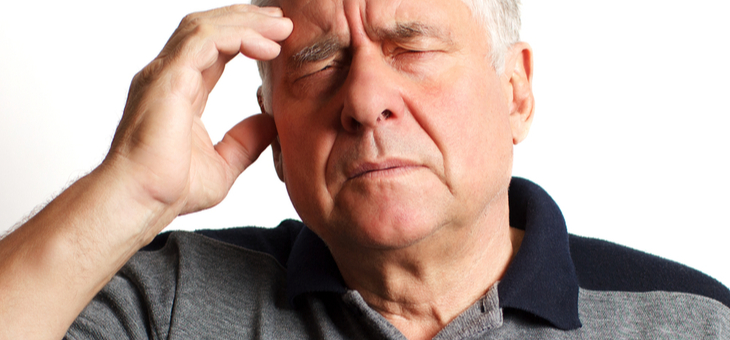Stroke patients are avoiding hospital during the COVID-19 pandemic, putting their lives at risk from the deadly condition.
Fewer people are presenting at hospitals for stroke during the pandemic, leading to pleas from medical professionals to seek help as soon as symptoms are suspected.
“If you suspect a stroke, don’t let COVID-19 stop you from going to hospital,” Dominique Cadilhac, of the Florey Institute of Neuroscience and Mental Health, told the Herald Sun.
Stroke is the third leading cause of death in Australia. In 2015, there were 10,869 stroke fatalities in Australia.
A stroke occurs when blood supply to the brain is interrupted. Not-for-profit research institute NeuRA says more than 60,000 Australians suffer a stroke each year, making it the second most common cause of disability in Australia.
“More than half of those who survive a stroke require help with normal daily activities,” the institute says.
“There is no cure for stroke, nor any forthcoming.”
Despite this, fear of contracting coronavirus in a hospital has apparently led to a 5 per cent drop in hospital admissions for the condition, according to a May study by the Australian Stroke Clinical Registry. Half of the 54 hospitals surveyed reported reduced presentations, particularly for mild stroke. Almost one in three hospitals reported a longer time from stroke onset to presentation.
Assistant surgeon Dr Sarah Spargo has joined a campaign to promote stroke awareness after suffering a stroke herself at work.
“The aim is to recognise the signs and treat it as early possible,” Dr Spargo told Nine. “The three elements in my excellent recovery were the professor calling it quickly, going to a very good stroke unit and getting treatment in a timely manner.”
Stroke Foundation chief executive Sharon McGowan told Nine that ambulance services had reported a 20 per cent fall in emergency calls since the pandemic began.
“Someone who develops, for example, speech disturbance or limb disturbance and then gets better might think ‘well, it’s a bit worrying but I really don’t want to go to the hospital’,” said Professor Stephen Davis, director of the Melbourne Brain Centre at Royal Melbourne Hospital.
“The big risk then is that they have a much bigger and more devastating stroke days or weeks after the first event.”
Treatment of stroke has improved, however, in some regional areas, with ABC News reporting that ‘revolutionary’ stroke services have succeeded on the NSW Mid North Coast and in rural Victoria.
In June, Professor Chris Bladin, director of stroke services for Ambulance Victoria, said people in rural and regional areas were 19 per cent more likely to have a stroke and a poorer outcome. But Ambulance Victoria’s stroke telemedicine service has helped to treat more than 800 Victorians between the start of the pandemic in March and June, including a record 325 in May. Hailed as a “game changer in the emergency care of stroke patients”, the service uses a secure video link to enable specialists to directly consult patients, their families and treating doctors.
“By having quick access to a stroke specialist, the staff are actually able to make a proper diagnosis of the stroke and the type of stroke that has occurred,” Prof. Bladin said.
The Victorian Stroke Telemedicine Service (VST) provides 24-hour assessments in 17 regional Victorian hospitals and two in northern Tasmania.
A similar scheme tested on the NSW Mid North Coast was rolled out across the state.
Stroke clinical nurse consultant Amanda Buzio said it offered fast access to the relevant experts.
“Since starting in the project, we have now been providing the same care to patients who had a stroke as anywhere else in major stroke centres in the country,” she said.
“People in regional and rural areas are quite isolated from these specialists, so having access to the ‘via a telehealth service’ is the next best thing to actually being in the room with those specialists.”
The service started at the Port Macquarie Base Hospital and Coffs Harbour Hospital in 2017, then the pilot program worked with Hunter New England, Central Coast and Mid North Coast local health districts, helping 1200 patients.
Ms Buzio said that prior to the program there had been no acute treatment for stroke patients on the Mid North Coast and the teleservice was “absolutely ideal” for ensuring stroke patients get access to an expert.
The $21.7 million program is jointly funded by the state and federal governments and is expected to roll out to 23 sites over the next three years, ABC news reported.
Studies overseas have concluded that people are dying because they are avoiding hospitals during the pandemic.
Dr Cheryl Carcel, senior research fellow and neurologist at Sydney’s George Institute for Global Health, said people living alone during lockdown might also miss out on early treatment because there is no-one around to recognise the signs of stroke.
Doctors are imploring us not to delay treatment that could save a life.
“Call triple 0 if you have (stroke) symptoms and you will be looked after just as well as before the COVID crisis,” Prof. Davis said.
Recognising signs of stroke
The FAST test is an easy way to remember and recognise the signs of stroke. FAST stands for Face, Arms, Speech and Time. Using the FAST test involves asking these simple questions:
Face – check their face. Has their mouth drooped?
Arms – can they lift both arms?
Speech – is their speech slurred? Do they understand you?
Time is critical – if you see any of these signs, call 000.
Source: Stroke Foundation
Are you confident you can recognise the signs of a stroke?
If you enjoy our content, don’t keep it to yourself. Share our free eNews with your friends and encourage them to sign up.
Related articles:
https://www.yourlifechoices.com.au/news/stroke-can-double-dementia-risk
https://www.yourlifechoices.com.au/health/covid19/covid19-stroke-fears
https://www.yourlifechoices.com.au/health/your-health/what-is-a-stroke

